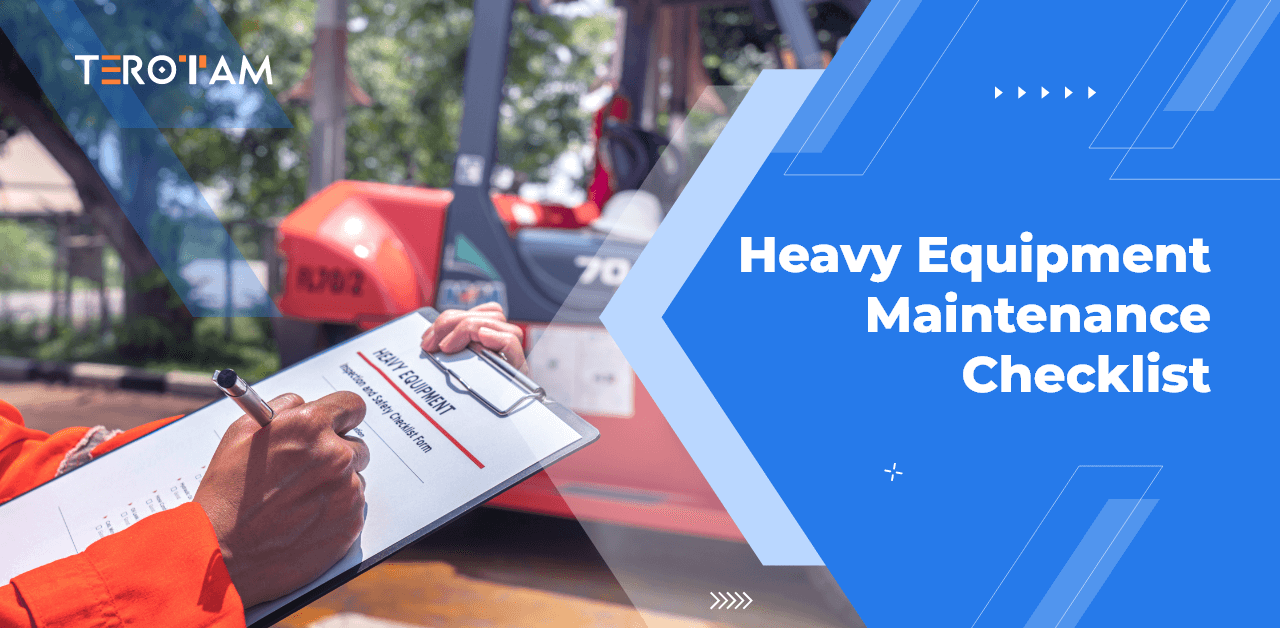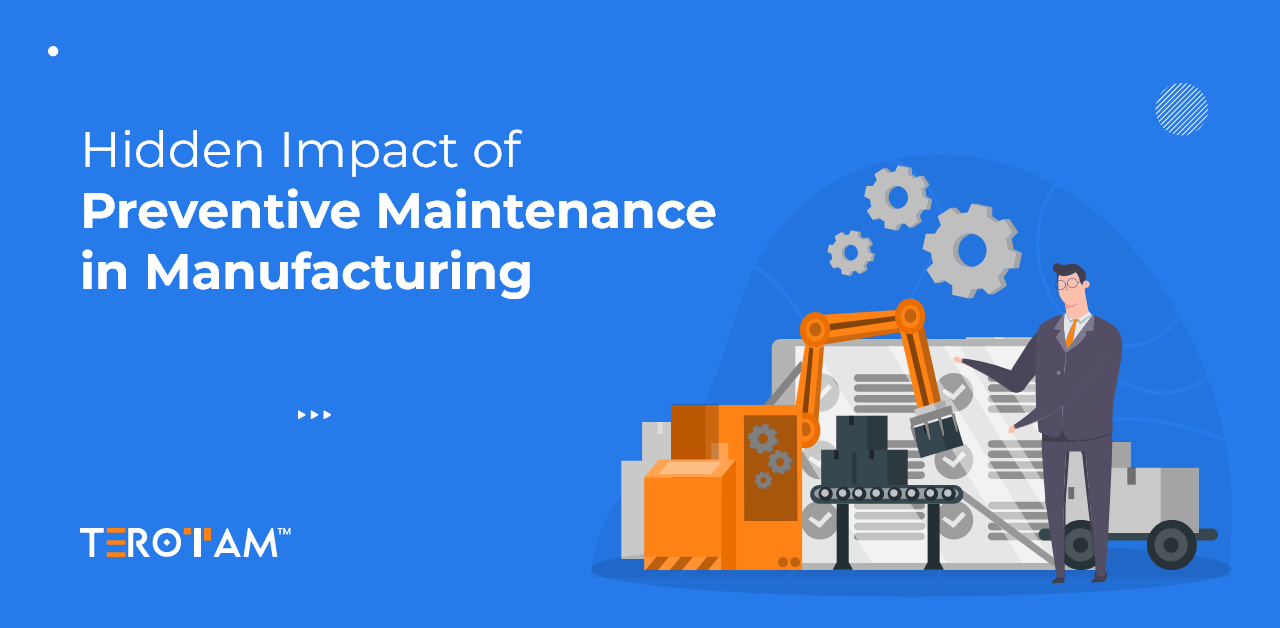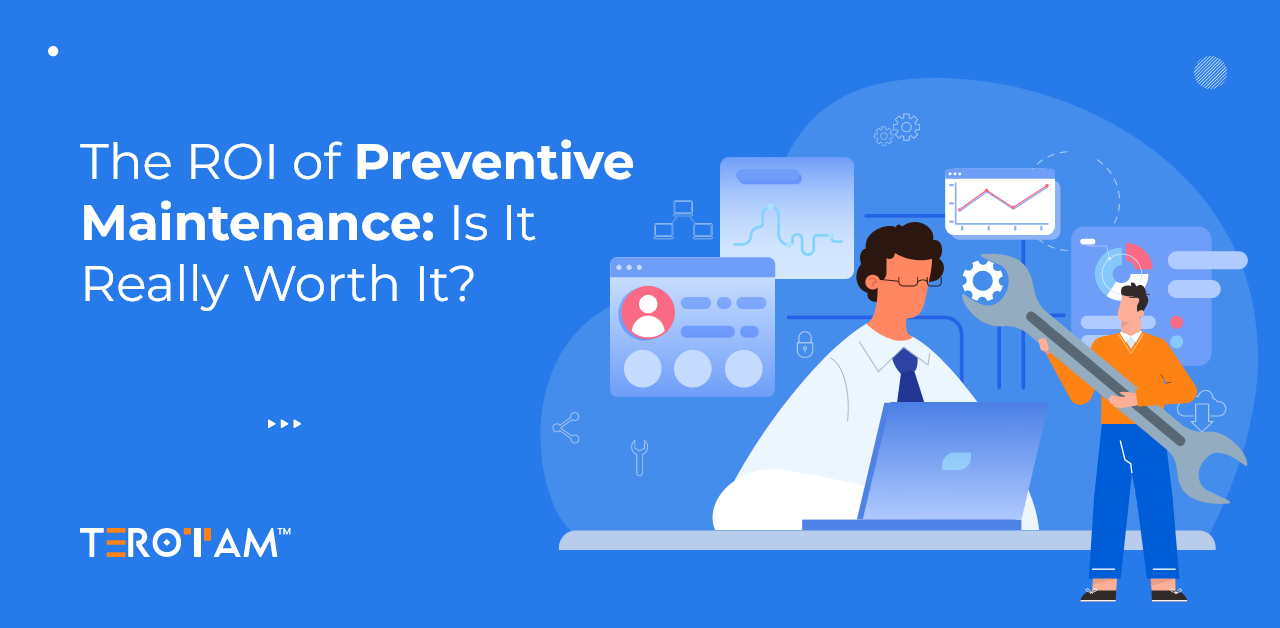Heavy equipment maintenance is the backbone of any construction or industrial operation. It ensures that machinery operates efficiently, safely, and reliably, reducing downtime and costly repairs.
One of the key elements of heavy equipment maintenance is the implementation of a comprehensive checklist. This checklist serves as a guide for pre-start checks and Preventive maintenance tasks, ensuring that every aspect of the equipment is inspected and maintained regularly.
In this article, we will take a look at the importance of checklists and what kind of checklists should be.
What is Heavy Equipment Maintenance?
Heavy equipment maintenance is a comprehensive regimen aimed at preserving the operational integrity and safety of large machinery utilized across various industrial sectors. It encompasses a range of systematic activities, including regular inspections, preventive maintenance, and reactive responses to unexpected breakdowns.
Regular inspections serve as the foundation of maintenance efforts, involving meticulous checks of critical components such as hydraulic systems, engines, transmission, and structural integrity to detect signs of wear or potential issues before they escalate.
Preventive maintenance, on the other hand, is a proactive approach that entails scheduled servicing, parts replacement, and adjustments to forestall breakdowns and extending equipment lifespan. Tasks within preventive maintenance include fluid checks and replacements, lubrication, filter replacements, and belt/hose inspections, ensuring that heavy equipment remains in optimal working condition.
In addition to preventive measures, reactive maintenance swiftly addresses immediate equipment failures to minimize downtime and productivity losses. While reactive maintenance is necessary in certain situations, its primary purpose is to resolve unexpected issues quickly rather than being the mainstay of maintenance efforts.
Understanding Maintenance Pre-start Checklist
Before operating heavy equipment, conducting thorough pre-start checks is essential to ensure operators’ safety and the machinery’s optimal performance.
Here’s a detailed breakdown of the pre-start checks typically conducted:
- Check fluid levels (engine oil, hydraulic fluid, coolant, fuel) and inspect for leaks.
- Inspect tires (tread depth, inflation, damage) or tracks (tension, wear).
- Test safety features (seat belts, ROPS, lights, alarms).
- Verify smooth operation of controls, steering, and brakes.
- Inspect hydraulic systems for leaks, wear, and proper function.
- Ensure attachments are secure and functional.
- Check for fluid contamination and review maintenance logs.
- Document any abnormalities for further evaluation and resolution.
Ideal Heavy Equipment Preventive Maintenance Checklist
A comprehensive Preventive maintenance checklist for heavy equipment typically includes:
Primary Components:
This involves examining critical components such as hydraulic systems, brakes, steering, and electrical systems for signs of wear, leaks, or damage.
- Hydraulic Systems:
- Inspect hydraulic hoses for leaks, abrasions, or bulges.
- Check hydraulic fluid levels and replenish if low.
- Look for signs of contamination in hydraulic fluid and address if necessary.
- Inspect hydraulic cylinders for leaks or damage.
- Test hydraulic system pressure and functionality.
- Structural Integrity:
- Inspect the frame for signs of cracks or structural damage.
- Check for loose or missing bolts and fasteners.
- Inspect welds for cracks, breaks, or signs of fatigue.
- Examine components for signs of corrosion or rust.
- Ensure that all safety guards and shields are securely in place.
- Transmission and Drivetrain:
- Inspect transmission fluid for proper level and quality.
- Check for leaks around the transmission and differential seals.
- Test the operation of the transmission, including forward, reverse, and gear shifting.
- Inspect drive shafts and universal joints for wear or damage.
- Check for abnormal noises during operation that may indicate issues with the transmission or drivetrain.
Engine Checks:
Checking engine oil levels and coolant levels and inspecting belts and hoses for wear or damage are crucial to preventing breakdowns and ensuring optimal engine performance.
- Oil and Filters:
- Check engine oil level using dipstick and replenish if necessary.
- Inspect oil filter for signs of clogging or debris buildup.
- Look for any signs of oil leaks around the engine block or oil pan.
- Check for oil contamination, such as coolant or fuel dilution.
- Follow manufacturer recommendations for oil viscosity and type.
- Cooling System:
- Inspect radiator for debris, blockages, or damage to fins.
- Check coolant level in radiator and overflow reservoir.
- Test radiator cap for proper sealing and pressure release.
- Inspect hoses and connections for leaks or deterioration.
- Flush cooling system and replace coolant according to manufacturer guidelines.
- Belts and Hoses:
- Check drive belts for signs of wear, cracking, or glazing.
- Ensure proper tension on belts according to manufacturer specifications.
- Inspect hoses for soft spots, bulges, cracks, or leaks.
- Check hose clamps and connections for tightness and security.
- Replace belts and hoses that show signs of wear or damage.
Cab and Dashboard:
Ensuring all gauges, lights, and safety features within the cab are functional is essential for operator safety and equipment performance.
- Operator Controls:
- Test all switches, levers, and knobs for proper operation.
- Ensure pedals and foot controls move freely and return to their original position.
- Check the steering wheel for excessive play and smooth operation.
- Test emergency stop controls for immediate response.
- Inspect seat adjustment mechanisms for proper functioning.
- Visibility and Safety Features:
- Check windshield and windows for cracks, chips, or scratches.
- Inspect mirrors for proper alignment and visibility.
- Test windshield wipers and washers for proper operation.
- Ensure all lights (headlights, brake lights, turn signals) are functioning correctly.
- Test horn for loudness and clarity.
- Electrical Systems:
- Inspect battery terminals for corrosion and clean if necessary.
- Check battery voltage and specific gravity if accessible.
- Inspect wiring harnesses for signs of damage, wear, or rodent intrusion.
- Test all electrical switches and controls for proper operation.
- Check alternator output and charging system voltage.
10 Tips to Make an Ideal Checklist for Heavy Equipment Maintenance
- Ensure that your checklist comprehensively covers all critical components and systems of the heavy equipment.
- Prioritize safety checks, especially for operator controls and visibility, within your checklist.
- Customize the checklist according to the specific requirements of different types of heavy equipment in your fleet.
- Enhance the checklist with visual aids such as diagrams and equipment manuals to aid technicians in their inspections.
- Clearly define the frequency guidelines for each maintenance task outlined in the checklist to ensure consistency.
- Encourage technicians to provide detailed documentation of their observations and findings during inspections.
- Regularly review and update the checklist to reflect changes in equipment specifications and maintenance requirements.
- Explore digital tools and software solutions to facilitate checklist management and improve efficiency.
- Provide comprehensive training to maintenance personnel on the proper usage and procedures outlined in the checklist.
- Foster a culture of collaboration and accountability among maintenance teams to ensure adherence to the checklist and promote proactive maintenance practices.
Conclusion
Implementing a comprehensive preventive maintenance program for heavy equipment is essential for ensuring operational efficiency, safety, and longevity. Creating and adhering to a detailed maintenance checklist allows you to understand common breakdown causes, prioritizing thorough asset knowledge, investing in training for maintenance teams, following manufacturer recommendations, and maintaining meticulous documentation, businesses can maximize equipment reliability and minimize costly repairs and downtime.
If you would like more insight into checklists and how you can use them to streamline heavy equipment maintenance in your business, connect with our experts now or write to us at contact@terotam.com.








